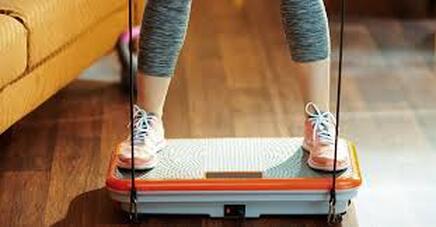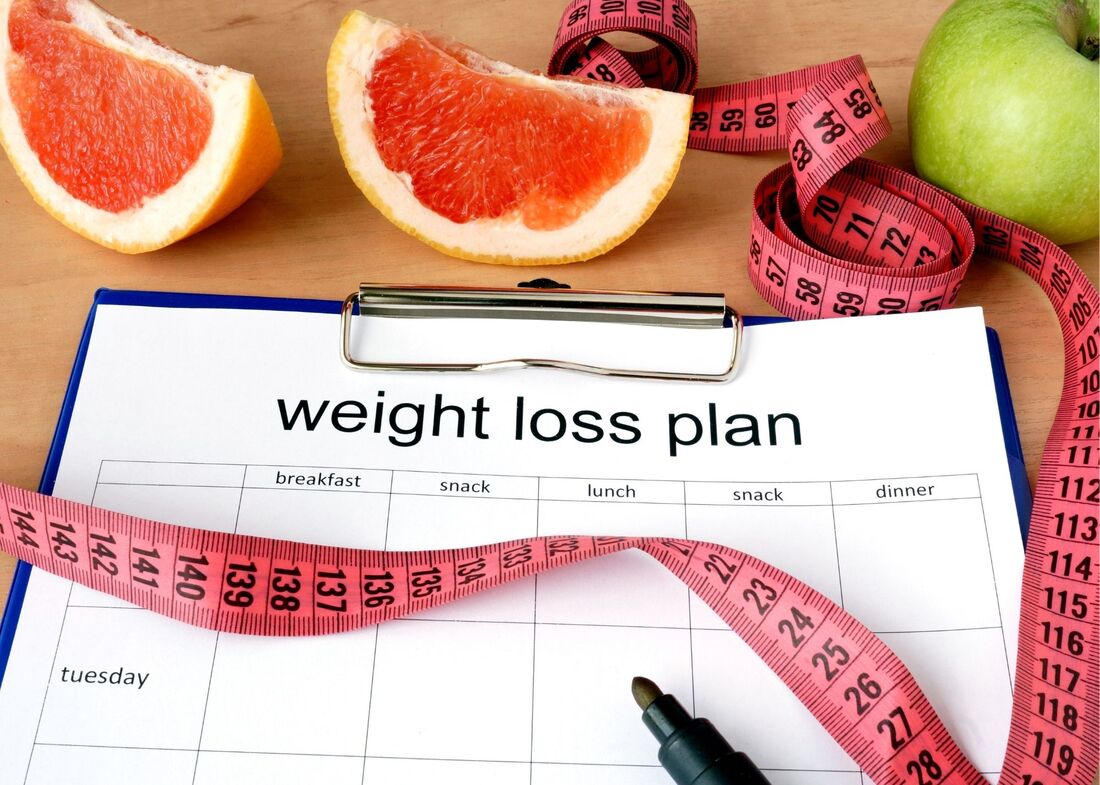 Are you looking to lose weight and wondering “will a vibration machine help me to lose weight?” This is a very common question that we get asked by clients, especially those who may find it difficult to undertake other forms of exercise or who are looking for different ways to have a positive impact on weight loss. What is a vibration machine/ whole body vibration training? A vibration machine is a lightweight platform that a person stands on, which provides light resistance exercise from repeated oscillations of the platform. It was developed in Germany, mainly for older people, to improve bone mineral density, balance and quality of life. The machine can be programmed to varying levels of oscillation/intensity. What effects can a vibration machine have on my body? Vibration machines have been shown to be effective in increasing leg blood flow, muscle strength and balance in the elderly population compared with control groups undertaking no other forms of habitual exercise. The effects on bone mineral density are inconclusive, with different study designs offering different outcomes. Vibration therapy has been used in some rehabilitation settings in conjunction with other forms of exercise to improve overall function, particularly in the elderly population. Can a vibration machine be used to assist weight loss? Although there are isolated studies that have shown improvements in body composition in patients with type 2 diabetes and middle aged females after 12 weeks and 9 months respectively in conjunction with caloric restriction; systematic reviews of a large number of published studies from reputable sources undertaken in 2018 and 2019 have not shown vibration training to be consistently effective in helping people to lose weight. The most recent systematic review in 2019 examined 7 studies that included 280 subjects who used three different types of vibration machine devices. The authors concluded that there were only insignificant effects on body fat percentage in these studies which were less than 6 months long. They concluded that further research with larger population numbers and duration were needed to further evaluate the effectiveness of vibration training. Need help with an individualised exercise program for your ability and goals? If you’d like to get some professional advice specific to your ability and goals, Book an appointment with one of our Exercise Physiologists today. Lisa Parkinson Accredited Exercise Physiologist & Credentialled Diabetes Educator.
1 Comment
As Exercise Physiologists we help people to manage a range of different health conditions, including overweight and obesity. We help people to set realistic goals and expectations, and provide them with strategies and solutions to assist them to improve their lifestyle, health and well-being. Over the years we have identified a number of common mistakes that people make when commencing a weight loss program. Here we list the top 3 mistakes.
Too much exercise too quickly/unrealistic expectations When commencing any lifestyle change program it is important to set realistic goals, and this is especially important when setting exercise goals. It is crucial to set SMART goals, which you are pretty confident that you can achieve, initially with short time frames (1-2 weeks), checking in with yourself and ticking off your adherence to these goals frequently. A common mistake that people make are being too ambitious with their exercise goal, setting the bar very high, and then finding their proposed goal/exercise program very difficult to stick to or achieve, and hence then “fall off the wagon”. An example is someone who is currently not exercising at all, setting an initial exercise goal to walk for 60 minutes each day. Walking 60 minutes a day is a huge jump from not exercising at all, and could be setting the person up for failure. A stepped approach of commencing with 2-3 days a week of a much shorter walking time, and then increasing this by 10-20% each week is a more realistic goal, increasing chances of success. It is also very important to physically write your goals down and refer to them often. This has been shown in studies to improve your chance of success. Not planning or scheduling your proposed exercise Benjamin Franklin once said, “If you fail to plan, you are planning to fail.” Therefore, once you have set an exercise goal for the coming week, it is very important to plan when you will complete this goal. We often hear from our clients that they are “too busy”, or that “something came up”, or they just “didn’t get around to it.” We need to schedule our exercise into our week, just as we book in and schedule our appointments with our doctor, our hairdresser or for servicing the car. At the start of the week, sit down and review your calendar or diary for the coming week, and write your planned exercise into your diary at set days and times. This again relates back to writing your goals down, and helps to increase adherence to your program and your chance of success. Measuring success only by the number on the scales It’s very common to feel like you are not losing weight, particularly in the initial stages of your program, despite feeling that you are doing all the right things. But there are a number of factors which can affect the number on the scales for any given day and this should not be the only way that you measure your success. The benefits of your program can be monitored in a number of ways, and improvements can be seen in your:
Improvements in any of the above factors show that your program is having a positive difference and can help keep you motivated to keep going. Don’t make the mistake of using body mass as your only measure of success. Looking for more information to help you exercise for weight loss? See our articles here or book in with one of our Exercise Physiologists for a personalised program and individual support. Lisa Parkinson Accredited Exercise Physiologist & Credentialed Diabetes Educator  Are you finding it hard to lose weight? We understand that weight gain is a lot easier than weight loss for many, and that weight gain is a common problem over the Christmas season. Exercise Physiologists help many people just like you, to improve their weight and health choices so that a healthy lifestyle becomes a way of life, not a quick fix. Here we discuss 5 top tips that you can start implementing today, to set you on the right path to success. 1. Set realistic goals and expectations Don’t be too ambitious! Setting yourself up for success and not failure is important. You don’t want to feel discouraged in week one because you have not reached your first goal. Set a SMART Goal, and then review your confidence and importance levels. Example: I want to walk 4 times for 30 minutes within the next 7 days. Now rate your importance of achieving this, and also your confidence level in achieving this both out of 10, with 1 being “there is no way I can achieve this”, and 10 being “I am going to smash this out of the park!” Are they above 6 out of 10? If yes, go for it, if no, then you may want to modify your goal to something a little bit more achievable, as chances are it may be too ambitious! 2. Create new habits It’s a new year, so why not practice new healthy habits and/or try something different. You might find something new and exciting that works better for you. Again, try not to be too ambitious and change everything at once. Choose one habit and then practice it until it becomes a new habit and part of your everyday lifestyle. Example, I will pack a piece of fruit everyday to have for morning tea to have with my coffee, rather than having biscuits at work. It’s a small, but effective change to a healthier lifestyle. 3. Be NEAT When it comes to weight loss, there are a few angles that we can target when trying to increase the amount of energy expended each day. We know planned exercise is important, but our Non Exercise Activity Thermogenesis, that is, the energy that we burn from undertaking all non exercise, sleeping or eating related activities is also very important, and often overlooked. As you can appreciate, people who work on their feet, and are active in their jobs have a higher NEAT than those in office jobs. But, you can influence your NEAT by practicing small changes. This might include taking the stairs rather than the lift, standing, rather than sitting, walking around whilst talking on your mobile phone, walking meetings with colleagues, cleaning the house, walking to the shops. Be active as much as you can! 4. Phone a friend Have you noticed that time flies when you’re having fun!! This can be the same with exercise. Rather than undertaking exercise alone, ask a friend to go with you, or pop in your headphones and talk on the phone to them whilst exercising. If a friend is unavailable, music, podcasts or even netflix whilst on the treadmill are all great ways to keep your mind busy whilst moving! 5. Practice mindfulness You really can’t out run/out train/out smart a poor diet. If your goal is weight loss, we also need to be mindful of what energy we are consuming through food and drink. Sometimes we eat or drink without thinking, eat on the go, or simply eat because we’re bored, or “it’s there”. Keeping a food and exercise diary can help you to consider your food choices and make informed decisions about any changes that could be made to improve your overall nutrition. Eating Healthy for Adults is a great place to start, comparing your current eating habits to those recommended in the Australian guidelines. Would you like further and individualised help? If you’re struggling to set goals or need some help with developing strategies to improve your lifestyle, speak to an Accredited Exercise Physiologist today. They can help you with motivation, setting realistic goals and finding a place to start. Find more information here Lisa Parkinson Accredited Exercise Physiologist, Wellness Coach and Credentialed Diabetes Educator. |
AuthorSLisa Parkinson Archives
July 2024
Categories
All
|


 RSS Feed
RSS Feed